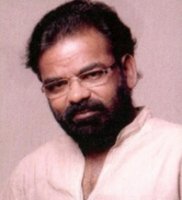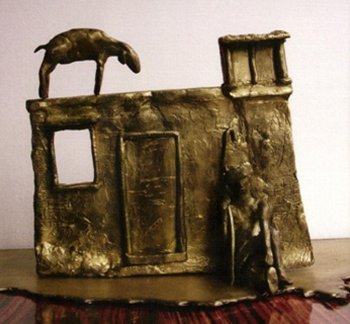
|   |

|   |
Rural rhythms - Padma Jayaraj e-mail: padmajayaraj@gmail.com April 14, 2013 The cultural heartland of Tamilnadu is home to the world famous bronze sculpture of Nataraja, the dancing Siva, the iconic image that marks the classical artscape of India, which dates back to the Chola days. Artists with the strength of family heritage still cast them in their home-workshop in Swamimalai near Thanjavur.  Here, a lesser known artist who hails from the hinterland of southern peninsula is engaged in casting the rural rhythms in a combination of molten metals of brass, copper, and alloy. MD Paul Walakie, based in Chennai, is a product of Art Club Evening College. He has showcased his works in solo as well as in group shows. The pieces exhibited in Jehangir Art Gallery, Mumbai (26th March -1st April 2013) display the throbs of pastoral life hidden in the folds of rural south. The artist’s narrative chronicles the saga of a vanishing tribe in its existential crisis subsumed by the growing urban sprawl. Its inherent poetry is captured in its rhythmic flow of life, in all the pieces on display. Close to perfection in casting, the figures delineate the kind of pulsating life that the cave dwellers tried to carve on rock faces. The sheep as their guardian and sustenance is omnipresent in every phase of their life in its wholesomeness. Placed atop make-shift pillars they seem to be the capitals of miniature columns that create a miniature world. And you enjoy close scrutiny. The sculptures explore the placid regularity of rustic life. The facade of a rural hutment invites you to the interior of its warmth and love where a mother and a child share their sanctified bond. For a moment you recall the endearing, never tiring mother - child theme celebrated in art all over the world. 

Another piece is the patio of a hutment where a woman separates grain from chaff. A sheep is nearby ready to eat its share of the remnants suggesting the sacred relation between the human and the animal in the divine chain of life. Here is another, a woman walks on and her sheep follows her. A shepherd and his sheep is another piece, where a male takes the centre stage. A village well surrounded by three women fetching water and just relaxing to share companionship is symbolic of both fertility and reality. Again you sense the need for bonding as part of life. And the ‘Water-Carriers’ is still part of Indian panorama. ‘Children at play’ with the omnipresent sheep close by, is another aspect of life. Folk circus is a feature of village life in India. The ritual dance Karahattam, is a performance of balancing art. Carrying water-filled pots on head, the dancers move in a procession accompanied by men who play rhythmic chimes. And a musician plays on the pipe while men and women partake in the ritual event. Finally, there is the folk performance, an exclusive art form: dance in tune with percussions. Strangely, the deity is absent here. Perhaps the intimations from the immortal, is deeply inter-fused in the lived reality of life as part of nature. Padma Jayaraj is a freelance writer on the arts and travel. She is a regular contributor to www.narthaki.com |